Importing a puppet into Adobe Character Animator is really easy.
If you haven’t already, launch the Adobe Character Animator App. You may have a previous project open. We could start importing puppets and assets into this project – but that will quickly make for a bloated and disorganised project.
First we want to create a new project.
Before you create the new project there are a few things you want to consider. First is where you intend to save this project. Just putting it on the desktop or in your documents folder might not be the best, as you will have a lot of associated files like background art and audio files floating around.
We want to be better organised than that! We actually did a tutorial on File Structures that you can read about in more detail [here].
To keep things moving we are going to create a parent folder and then nest our project inside that. So click on;
File>New Project
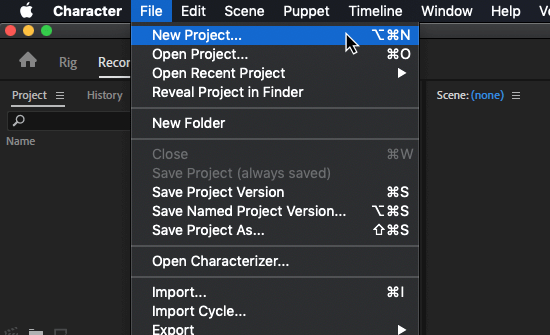
Now, before we create the new project we want to create that parent folder, so click on ‘New Folder’
Name your folder something that we will quickly identify. I’m placing mine in the documents folder and I’ll name it ‘April Demo’.
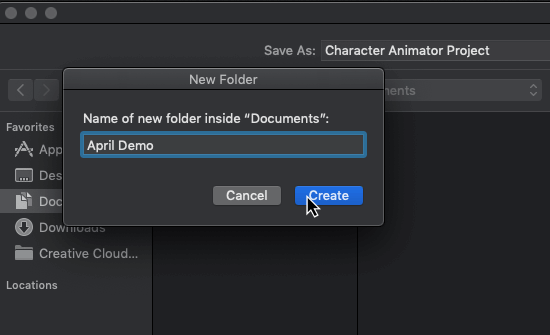
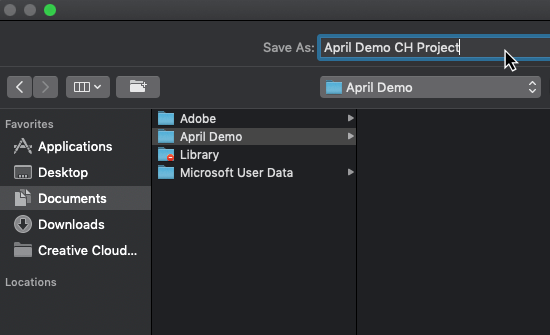
And that’s it. We now have a new parent folder (April Demo) saved in our documents folder, and inside that our project (April Demo Ch Project) ready to import our puppet.
Next we want to import that puppet.
All we do is click;
File>Import
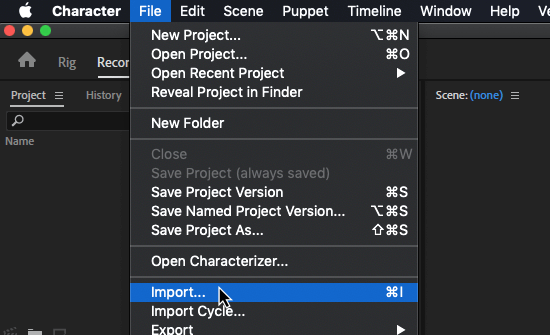
We then locate the puppet file that we downloaded from ElectroPuppet. Again, make sure that you keep all your puppets in a place that you can locate easily.
A quick thing to keep in mind, Character Animator actually imports a copy of the puppet file into the project. So you don’t have to worry about doing any damage to the puppet – you’re always working on a copy.
And that’s it!
Next we want to move the imported puppet into a new scene. To do this, make sure you have the puppet we imported selected. Then click the little clapperboard icon at the bottom of the ‘Project’ window. Your puppet will launch in a new scene.
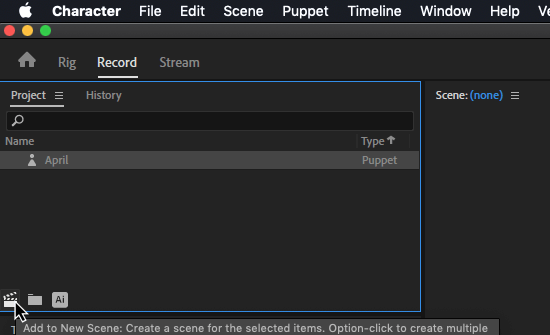
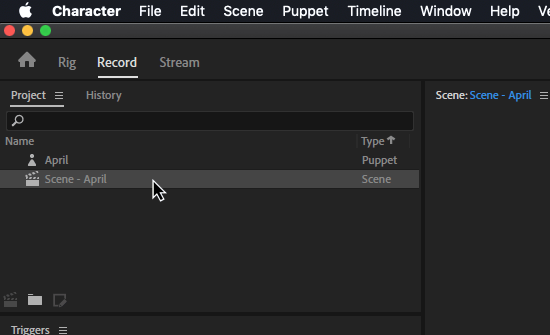
Often we want to add another puppet to a scene we’ve already created. To do that we import the puppet the same as before;
File>Import
And choose the additional puppet. You should now see two puppets and a scene in your Project window;
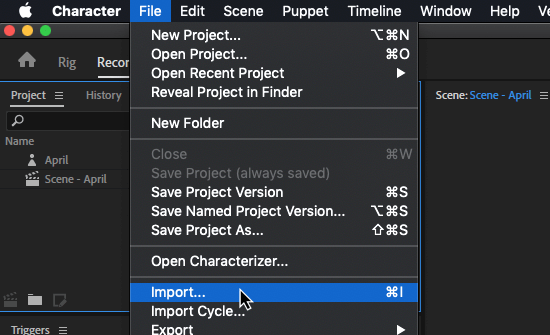
This time we want to add this new puppet to an existing scene, rather than creating a new scene. So what we do is simply drag the puppet from the ‘Project’ window to the existing scene (or onto the timeline).
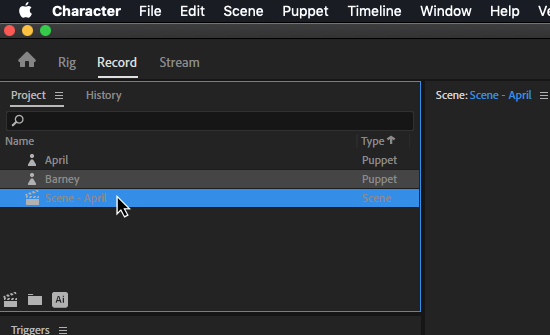
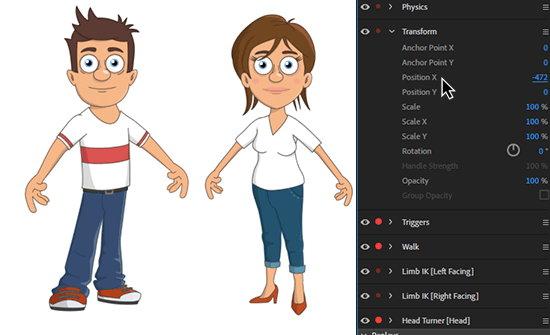
Your puppets are probably layered on top of each other – so you will have to position them with the Transform controls, in the ‘Properties’ panel.
In this tutorial we learned how to create a new project. We touched on the importance of file structures and we learned how to import a puppet into our project. We then learned how to import an additional puppet and add it to the scene.
In the next tutorial we will look better understanding the RECORD screen.
You can find that [here].
ElectroPuppet acknowledges the traditional custodians of the land, the Gumbaynggirr people.
We pay our respects to their elders, past, present and emerging.